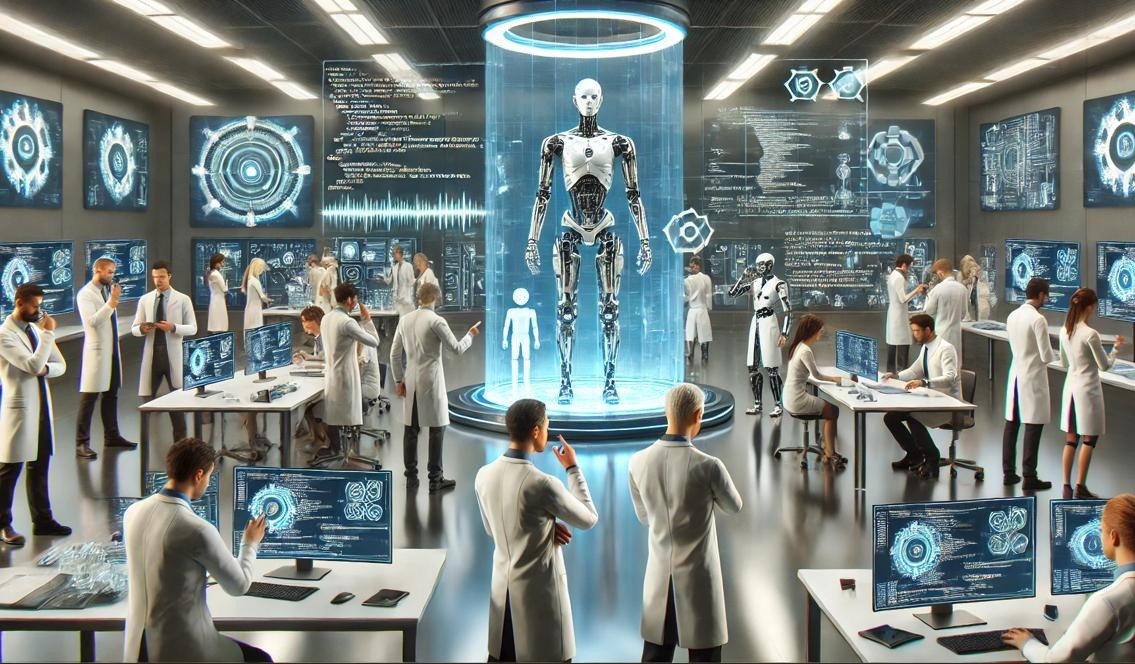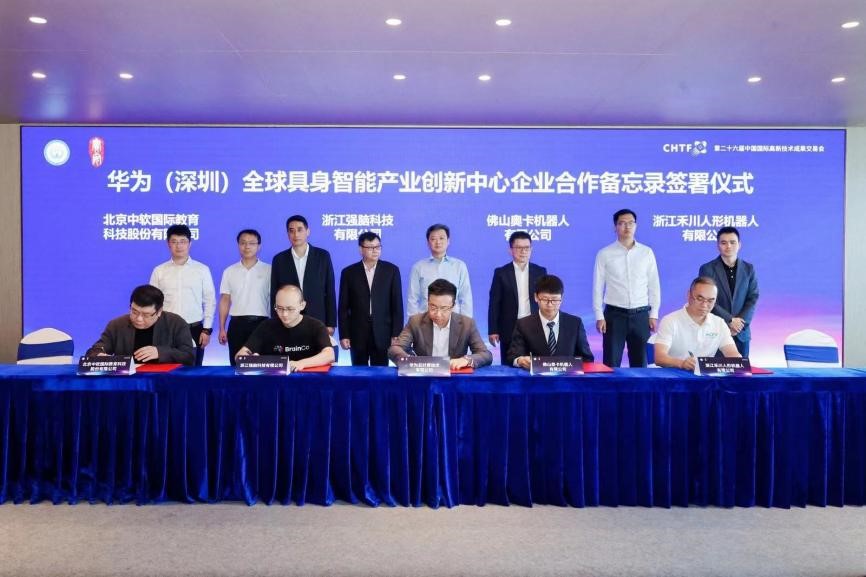In the context of the rapid development of global artificial intelligence and robotics, the humanoid robot industry is ushering in breakthrough development opportunities. As a giant in the field of information and communication technology, Huawei's layout and investment in this emerging market have attracted widespread attention from the industry. With the promotion of technology and policies, Huawei has not only gradually deepened its technology, but also cooperated with a number of state-owned enterprises, providing strong support for future market prospects. In this article, we will discuss Huawei's presence in the field of embodied intelligence, as well as its potential market opportunities and industry impact.
1. Huawei's strategic layout and cooperation
Huawei began to set foot in the field of humanoid robots as early as 2022, and in June 2024, it released the "KUAVO" humanoid robot equipped with the self-developed Pangu model. Subsequently, the establishment of the Huawei (Shenzhen) Global Embodied Intelligence Industry Innovation Center marked a new stage of development for Huawei in the field of robotics. The center is not only a technology research and development platform, but also a comprehensive center integrating industrial cooperation and innovation incubation. Through cooperation with Leju Robotics, Zhaowei Machinery and Electronic, Topstar, and other enterprises, Huawei hopes to achieve collaborative R&D in the fields of embodied intelligence and flexible automation, and accelerate the commercialization of humanoid robot technology.
The cooperation with state-owned enterprises has given Huawei greater resource support and market recognition in the field of humanoid robots. For example, Huawei is exploring collaboration with partner companies to drive innovative humanoid robot applications. These collaborations not only enable Huawei to improve its supply chain, but also help it establish technical standards and product advantages in the humanoid robot industry.

Figure: Huawei's Global Embodied Intelligence Industry Innovation Center was officially launched (picture from the Internet)
1. Technological innovation: the advantages of embodied intelligence and multi-modal large models
Huawei's technological deployment in the field of embodied intelligence involves many innovations: Advances in technologies such as embodied intelligent large models, multi-modal large models, AI computing power, and flexible automated assembly have provided important support for humanoid robot perception and decision-making. Specifically, Huawei's humanoid robot technology combines the Pangu model with powerful capabilities in multimodal recognition such as natural language processing, vision, and hearing. These technologies enable robots to perceive and understand their surroundings and react in real time, thereby improving the robot's ability to perform complex tasks in dynamic environments.
Huawei's flexible automated assembly and test systems are also leading. Automated testing technology enables robots to simulate tasks in different environments, while collaborative manufacturing helps robots improve their high-precision and diverse execution capabilities. These technologies are not only an important breakthrough point in the robotics industry, but also will make the future commercialization process smoother.
1. The potential and investment opportunities of the humanoid robot market
The market potential for humanoid robots is huge. According to McKinsey, the global humanoid robot market has a potential valuation of up to $120 trillion, attracting the active participation of tech giants such as Tesla, Apple, Huawei and Nvidia, symbolizing an unprecedented business opportunity. Goldman Sachs predicts that the global market size of humanoid robots will reach $37.8 billion by 2035, with a compound annual growth rate of nearly 64%, making it one of the fastest-growing high-tech industries in the next decade. With its own technical strength and supply chain resources, Huawei is expected to take a share of this market and gain a relatively stable market share.
From the perspective of market demand, the demand for embodied intelligent robots is expanding from industry to commercial and home services. Huawei's multimodal and flexible automation technologies are emerging in scenarios such as factory automation, healthcare support, education and training, and customer service. For example, Huawei is exploring how to apply robots to smart retail, using natural language processing and multimodal interaction to improve customer experience. This not only expands the application scenarios of robots, but also creates possibilities for market expansion.
2. Policy support and industry trends: promote the process of localization
National policies have also provided support for the rise of the humanoid robot market. For example, China's "14th Five-Year Plan for the Development of the Robotics Industry" explicitly encourages independent innovation and localization in the field of robotics, and local technology companies such as Huawei have received policy support. These policies will accelerate the industrialization of humanoid robots, providing more resources and market protection for enterprises. According to IFR and the Chinese Institute of Electronics, the market size of Chinese humanoid robots will grow at a compound annual growth rate of 30% between 2023 and 2030, and is expected to reach 870 billion yuan by 2030. The broad market prospect and policy support have brought unprecedented opportunities for Huawei and other domestic robot brands.
At the same time, the demand for humanoid robots continues to grow in the international market, especially in the fields of healthcare and retail. In Japan, for example, embodied intelligent robots have been recognized as an important aid to an aging society. In these markets, Huawei is not only able to achieve localized applications with its embodied intelligence and multimodal technology, but also can leverage its global brand influence to quickly enter the international market. This opens up a new growth path for it.

Pictured: The signing ceremony of the Memorandum of Understanding (MoU) of Huawei's Global Embodied Intelligence Industry Innovation Center
1. Huawei's core competitiveness and industry standardization trends
Huawei's accumulation of AI chips, large-scale model software, and vehicle-machine collaboration has given it unique technological advantages in the humanoid robot industry. For example, the machine learning capabilities and multimodal perception capabilities of its Pangu large model have significantly improved the decision-making efficiency of robots in complex tasks. By combining flexible manufacturing technologies, Huawei's humanoid robots can not only adapt to complex environments, but also be flexibly deployed in scenarios such as manufacturing and logistics. These technologies have enabled Huawei to gradually develop core competitiveness in the industry.
In addition, Huawei's participation is expected to accelerate the establishment of an industry standard for humanoid robots. With in-depth cooperation with state-owned enterprises and partners, Huawei can not only promote the development of industry standards, but also promote the further maturity of industry technologies. The promotion of standardization will help the sharing and interoperability of resources within the industry and promote the development of the entire humanoid robot ecosystem.
2. Conclusion: Future market opportunities and technology outlook
Huawei's deployment in the field of embodied intelligent robots demonstrates its forward-looking future development and confidence in the market. With the continuous advancement of technology and the increase in market demand, the humanoid robot industry is expected to enter a period of rapid development. Through in-depth technology deployment and industry cooperation, Huawei has not only promoted the innovation of embodied intelligence technology, but also promoted the improvement of the industrial chain, forming a comprehensive ecosystem covering R&D, manufacturing, and marketing.
In the future, with the further maturity of embodied intelligence technology, humanoid robots are expected to be widely used in many fields such as industry, home, and commercial services. Huawei's continued investment in this area is not only likely to boost market development, but also give it a first-mover advantage in emerging technologies. Huawei's layout and technological innovation are not only the expansion of products, but also represent the global rise of China's high-tech enterprises in the field of robotics.






